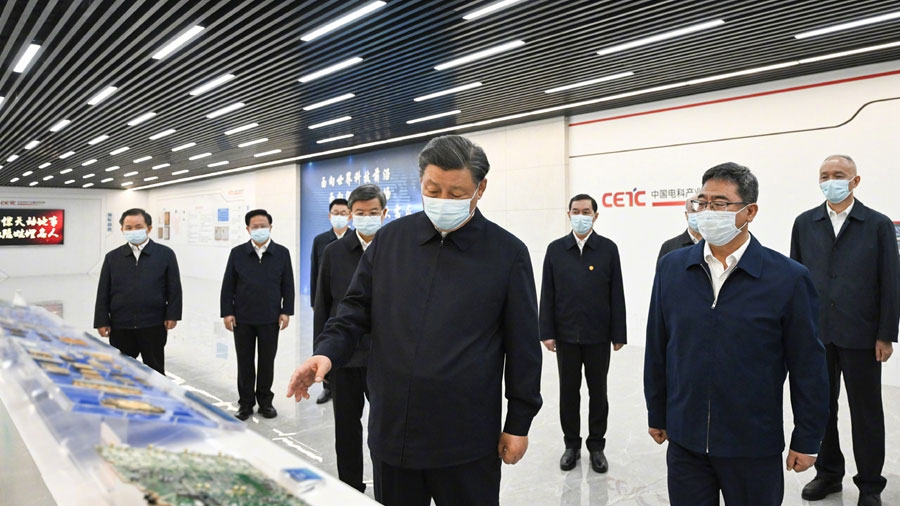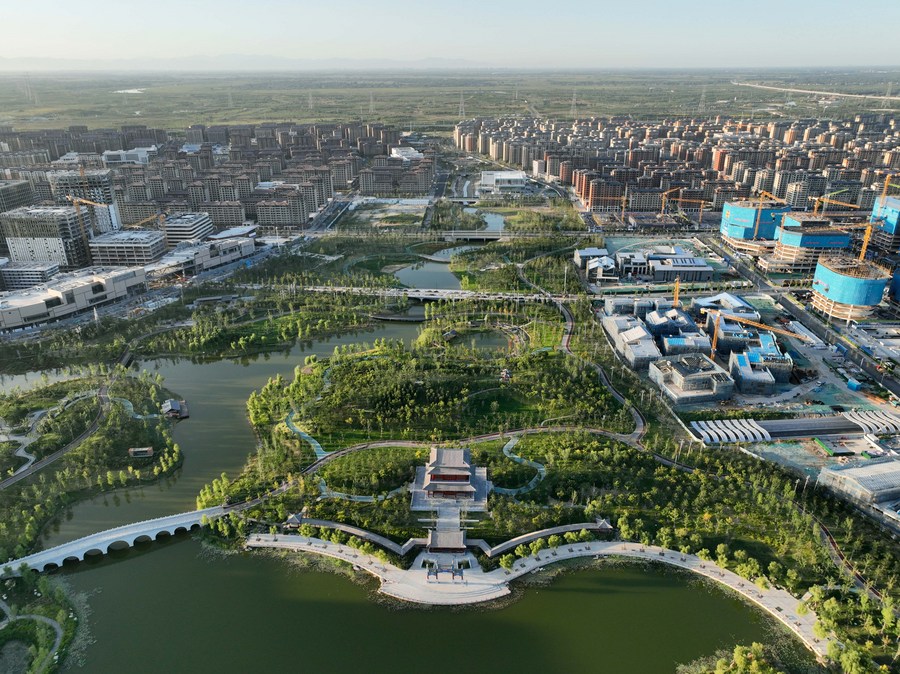
Chinese President Xi Jinping visits a research institute in Shijiazhuang, capital of north China's Hebei Province, May 12, 2023. /Xinhua
Chinese President Xi Jinping visits a research institute in Shijiazhuang, capital of north China's Hebei Province, May 12, 2023. /Xinhua
Editor's note: John Gong is a professor at the University of International Business and Economics (UIBE) and VP- Research and Strategy at the UIBE-Israel. The article reflects the author's views and not necessarily those of CGTN
Hebei Province surrounds Beijing, and Tianjin as well, the two largest cities in northern China. The three areas are supposed to coordinate development under the central government's Beijing-Tianjin-Hebei Integration Plan. But one of the embarrassing things about Hebei Province is its lagged-behind development status. Hebei's per capita GDP ranks 27th among the Chinese mainland's 31 provincial-level regions, yet it is one of the most populous provinces. In fact, its per capita GDP is less than one third of Beijing's and half of Tianjin's.
This is the economic context of President Xi Jinping's inspection tour to Hebei Province in the last two days. Not surprisingly, he stressed the theme of "innovation-driven" as the core economic development strategy. In a speech to Hebei officials on May 12, he went about further substantiating the content of that strategy and raised three issues.
Strengthen industry-university-research collaboration
Industry-university-research collaboration refers to an innovation model built on collaborations between the corporate world, the university community, and research organizations. This has proven to be an effective model, especially when it comes to industrializing and commercializing inventions and innovations. President Xi emphasized this model in his speech, and also called for the built-up of the Beijing-Tianjin-Hebei National Technology Innovation Center in that regard.
Zhongguancun Innovation Center is a greatly successful example of such an innovation model, leveraging the university resources clustered in the Zhongguancun area. Originating in Beijing, it has developed into a vast network of hi-tech companies incubated over the years. Now it has set up a branch in the city of Baoding that was launched in 2015 and currently has about 3000 local employees.

A view of Rongdong District in Xiongan New Area, north China's Hebei Province, September 6, 2022. /Xinhua
A view of Rongdong District in Xiongan New Area, north China's Hebei Province, September 6, 2022. /Xinhua
Achieve high-level technological self-reliance and self-improvement
On numerous occasions, President Xi has mentioned the importance of high-level technological self-reliance and self-improvement as a means to achieve high-quality development. And that is probably the reason why he chose to visit the Shijiazhuang International Biomedical Park to see pharmaceutical products that integrate traditional Chinese medicine with Western medicine.
There are a few such high-level, self-reliant things developed in Hebei Province that are mentioned in President Xi's inspection tour, including docetaxel for injection, a new drug developed by Shijiazhuang Pharmaceutical Inc. and already certified as an orphan drug by the U.S. Food and Drug Administration. Another technology that Hebei can be proud of is the world's first new treatment technology for coke oven gas iron production, which can reduce carbon emissions by 40 percent. This was invented by Hebei Steel Inc.
Enterprise being the main body of innovation
That enterprise is the main body of innovation is another theme that President Xi mentioned in his speech. During the inspection tour, Xi emphasized that it is necessary to consolidate and strengthen the foundation of the real economy, put the development of strategic emerging industries such as integrated circuits, network security, biomedicine, power equipment, and safety emergency equipment as the top priority, and strive to build a world-class advanced manufacturing cluster in Hebei.
Inventions can come from various sources, probably mostly from university labs these days. But ultimately it is the corporate world that realizes its value. Years ago when I was managing the Beijing office of Accenture Institute for High Performance (AIHP), we conducted a study on innovation by corporate China. That report promoted the idea that innovation is all about turning money into great ideas, but equally importantly, turning great ideas into money. Enterprise being the main body of innovation highlights the indispensible role of the corporate world in driving innovation and innovation-driven growth of the economy.
(If you want to contribute and have specific expertise, please contact us at opinions@cgtn.com. Follow @thouse_opinions on Twitter to discover the latest commentaries in the CGTN Opinion Section.)